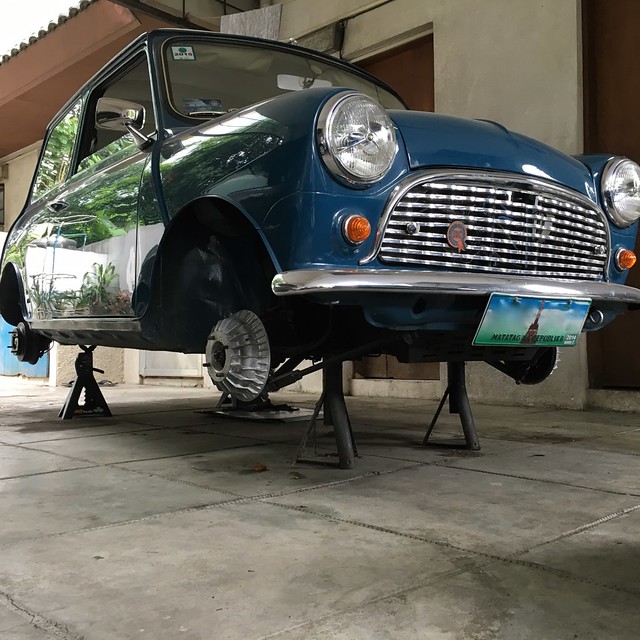 |
| ca. 2006 |
Eight years ago I vacated this space, not knowing that I would be back someday...
 |
| Late Spring 2016 |
 |
| Altec 861 cabinet |
Among those that didn't make it into the 20 foot container in 2008 was a pair of Altec 861 cabinets loaded with generic 15" drivers. I used one temporarily to get some sounds going in the room while I figured out how to repurpose the other cabinet.
Amplification
 |
| Grommes LJ2 |
This sweet "Little Jewel" PP6V6 integrated mono amp fired up with no problems after almost 8 years of silence.
 |
| Rek O Kut B12GH + Velvet Touch |
My hand-carried Velvet Touch tonearm "blu-tacked" on a ROK B12GH and mounted on a state-of-the-art crate plinth.
After a thorough cleaning and re-lubrication of the main bearing, Papst motor and replacement of motor mounts, the dreaded motor vibration is still felt on the tonearm finger lift. I have to send the idler wheel to Terry Witt for a rebuild and plan on building a heavy plinth.
Unlike the fussy Rek O Kut, this Pioneer PL6U is running quietly on its original lightweight plinth after I replaced the 3 perished rubber motor mounts with rubber grommets + light cleaning and re-lubrication. It sounds great with a $40 Stanton 500 cartridge!
 |
| Pioneer PL6U |
Line-level sources
 |
| KLH Model Twenty One |
Classic Hi-Fi FM table radio found in a bicycle shop.
 |
| Western Electric 111C + UTC A20 |
Stereo > Mono transformer mixer for the iPod Nano
Hi Eff Speaker
Since the Altec 861 (aka Madrid) share a similar internal volume with the Altec 614, I went to Lowe's to get 3/4" plywood cut to the size of the front panel. Using a Harbor Freight Router + Jasper Jig 200, I cut a hole for a rear mounted Altec 414A and a rectangular 2" x 7" port to mimic an Altec 614.
 |
| Altec 2-way |
Altec 861 loaded with an Altec 414A running full range augmented on top by an Emilar EH800 horn or Altec 32A horn with an Emilar EA175-16 compression driver.
Work in progress...








































